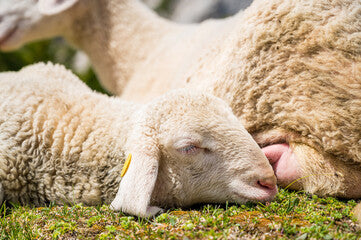Animals and Sleep Part 3: Why Sleep Varies Among Animal Species

Sleep researchers have explored variation in sleep habits among animal species. Jerome Siegel, PhD, professor of Psychiatry at the UCLA Center for Sleep Research, told the National Sleep Foundation that the best way to understand human sleep is “to study animals.” Said Siegel, “If we could better understand animal sleep, we could better understand the core aspects of sleep.”
REM Sleep In Animals
Like humans, all other mammals undergo REM (Rapid Eye Movement) sleep, with the same eye movement and heart rate variability that humans have—though the amount of time in REM sleep varies by species. It’s hard for scientists to know for sure whether animals actually dream during REM sleep, since we can’t exactly ask them… but the possibility does exist. Brain wave patterns between humans and other animals are similar during REM sleep.
When and Why Animals Sleep
Animal sleep schedules are usually based on the animal’s lifestyle, dietary needs, and the kinds of danger each species may face. Animal insomniacs like the elephant and giraffe are large mammals that need a great amount of nutritive input to keep their metabolisms going—so they spend most of their time eating and only a few hours each day sleeping. Other animals that sleep short hours are those that face constant threat from predators. For example, most birds only get REM sleep for a few seconds at a time, so they spend most of the night ready to wake at a moment’s notice—and they often sleep with one eye open.
By contrast, predators and animals who sleep in well-protected areas tend to sleep longer. The brown bat, which sleeps in groups in enclosed spaces protected from predators, sleeps up to 20 hours each night! Big cats and other animals higher up the food chain sleep, on average, more hours than the species upon which they prey.
Why Study Animals and Sleep?
Animal sleep habits and brainwave patterns can aid in sleep research for humans. Dogs have provided a key link to therapy for narcolepsy, according to the Sleep Foundation. Scientists studies dogs that showed similar symptoms to humans with narcolepsy—collapse, muscle weakness, unexpected sleep. Research into unihemispheric sleep—the ability of birds and marine mammals to let one brain hemisphere sleep while the other is active—may also have implications for the future of neural treatment for a range of brain illnesses in humans.
Author Bio: +Michelle Gordon is a sleep expert who researches and writes about sleep and health, and is an online publisher for the latex mattress specialist Latexmattress.org.



